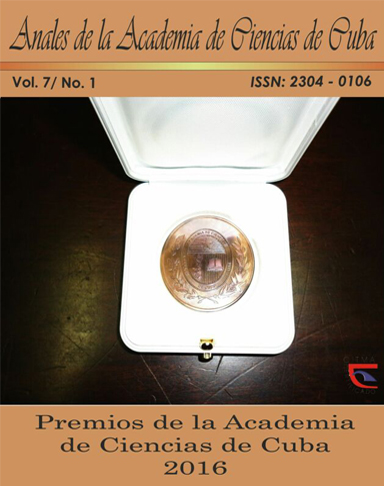IMPACTO DE LA APLICACIÓN DE LOS ENSAYOS GENOTÍPICOS DE RESISTENCIA DEL VIH-1 EN LA TERAPIA ANTIRRETROVIRAL EN CUBA. 2009-2015.
Abstract
Más de 24.000 personas están viviendo con el VIH en Cuba y más del 70% estaban recibiendo tratamiento antirretroviral a finales de 2015. Estudios previos han informado una incidencia alarmante de subtipos no B y de resistencia del VIH-1 a los antirretrovirales (ARV) en Cuba. En países con amplios recursos, los pacientes con VIH resistente a múltiples fármacos son tratados con Maraviroc. En Cuba, este medicamento nunca se ha utilizado y hay pocos informes sobre la caracterización molecular del lazo V3 del VIH-1, relacionado con resistencia a esta droga. Estas condiciones indican la necesidad urgente de la vigilancia de la resistencia a los ARV. Con este fin en el año 2009 fue implementado por Aleman et al. un ensayo genotípico casero que permite la determinación de la resistencia del VIH-1 a los inhibidores de la proteasa (IP) y la transcriptasa inversa análogos (ITIAN) y no análogos de nucleósidos (ITINAN). Además, actualmente la susceptibilidad de los subtipos no-B a los ARV es objeto de mucha atención, son escasos los datos de secuenciación de estos subtipos y se recomienda una mayor investigación sobre este tema.Downloads
Downloads
Published
How to Cite
Issue
Section
License
The journal Anales de la Academia de Ciencias de Cuba protects copyright, and operates with a Creative Commons License 4.0 (Creative Commons Attribution-NonCommercial License 4.0). By publishing in it, authors allow themselves to copy, reproduce, distribute, publicly communicate their work and generate derivative works, as long as the original author is cited and acknowledged. They do not allow, however, the use of the original work for commercial or lucrative purposes.
The authors authorize the publication of their writings, retaining the authorship rights, and assigning and transferring to the magazine all the rights protected by the intellectual property laws that govern in Cuba, which imply editing to disseminate the work.
Authors may establish additional agreements for the non-exclusive distribution of the version of the work published in the journal (for example, placing it in an institutional repository or publishing it in a book), with recognition of having been first published in this journal.
To learn more, see https://creativecommons.org






